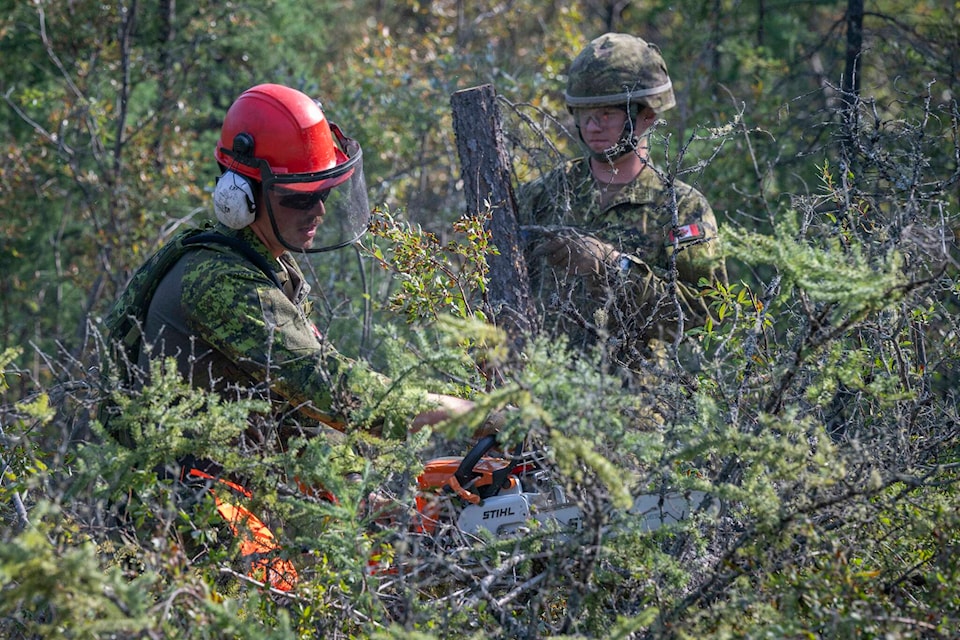Climate change is a consequence of colonialism and the separation of the natural world, and now, Indigenous Peoples and their world views hold unique strengths in responding to the climate crisis, a new report says.
For our Future: Indigenous Resilience Report emphasizes different forms of knowledge not normally found in other climate reports, like the ones from the Intergovernmental Panel on Climate Change (IPCC).
For example, quotes from elders, Indigenous leaders and case studies gave the report a different way of telling a narrative of the climate crisis with the nuance of how it affects particular nations, like Inuit, Metis or different First Nations, Deborah McGregor, one of the reportSA����Ӱ�Ӵ�ý�s authors, told CanadaSA����Ӱ�Ӵ�ý�s National Observer.
SA����Ӱ�Ӵ�ý�You miss a lot of that in a graph or a bar chart,SA����Ӱ�Ӵ�ý� she added.
The report is structured around five key messages:
The report, following the framing of others centred on First Nations, Inuit and Metis, places the blame for climate change on a disconnect between humanity and the natural world wrought by colonization.
SA����Ӱ�Ӵ�ý�Indigenous Peoples, including Indigenous elders and knowledge keepers, have called for a re-evaluation of the framing of climate change towards one focused on how human values are at the root of the climate crisis: a world out of balance,SA����Ӱ�Ӵ�ý� the report reads.
The report argues that values like greed, capitalism and consumerism have disrupted the natural balance of life in favour of a system prioritizing technology fixes, markets and western science.
The report addresses climate change through the imbalance of society, which requires a reorientation of the climate agenda towards a deeper understanding of the relationship between the land, water and ice.
In doing so, the authors make a deliberate switch to framing Indigenous Peoples and knowledge as holding strengths and advantages in climate action, rather than being SA����Ӱ�Ӵ�ý�portrayed as passive victims or harbingers of climate change impacts.SA����Ӱ�Ӵ�ý�
SA����Ӱ�Ӵ�ý�We have agency and our own solutions because we were able to survive,SA����Ӱ�Ӵ�ý� McGregor said, pointing to colonial policies like residential schools and environmental changes like the overhunting of buffalo on the Prairies in the 19th century that took the animal to the brink of extinction.
For Kristine Wray, another report author, both food security and self-governance are essential to Indigenous-led climate action. Wray looks at food security as an example of how Indigenous nations have a deeper understanding of sustainability and connection to the lands and waters, with an eye towards harvesting, not just sales at a grocery store.
Self-governance is also essential because Indigenous leadership needs SA����Ӱ�Ӵ�ý�all the tools availableSA����Ӱ�Ӵ�ý� to lead climate action. Wray looks at a lack of veto power in decisions over land and resources as hampering Indigenous control of climate-related decisions.
ItSA����Ӱ�Ӵ�ý�s why the report doesnSA����Ӱ�Ӵ�ý�t centre climate as an existential threat, but another crisis emerging from colonialism. The report identifies the interrelated and intersectional crises brought by the disruption of colonization, which climate change magnifies and exacerbates, like the infrastructure crisis.
The rate of global heating in Canada has left Ottawa scrambling to close the infrastructure gap, which sits at hundreds of billions of dollars. Indigenous Services Canada has made promises to close the gap by 2030.
The climate crisis is not viewed as entirely negative in the report, but contains hope through the turning back to Mother Earth to find balance. McGregor, who is Anishinaabe, looks to her peopleSA����Ӱ�Ӵ�ý�s disaster stories that always contain hope. In the stories, humanity needs humility and the help of oneSA����Ӱ�Ӵ�ý�s animal relatives, and they always come to humanitySA����Ӱ�Ӵ�ý�s aid.
SA����Ӱ�Ӵ�ý�And usually the hope comes out of when the relatives come to our aid. ItSA����Ӱ�Ӵ�ý�s born out of love,SA����Ӱ�Ӵ�ý� she said.
ThatSA����Ӱ�Ӵ�ý�s why the report frames climate change as a message and warning, as well as an existential threat.
SA����Ӱ�Ӵ�ý�We shouldnSA����Ӱ�Ӵ�ý�t look at climate change as a negative thing,SA����Ӱ�Ӵ�ý� Elder Dave Courchene is quoted in the report. SA����Ӱ�Ӵ�ý�It is because of how we have behaved as human beings that we have to feel the impact of what we have done to the Earth.SA����Ӱ�Ӵ�ý�
The report is part of a series of papers under the broad umbrella of Canada in a Changing Climate, which builds off the work of the IPCC through a Canadian context, Graeme Reed, one of the authors of the new report, told CanadaSA����Ӱ�Ӵ�ý�s National Observer.
Other reports in the series showed that Canada is warming at twice the global average, while the Arctic is warming three times faster. Other reports investigated the health risks of the climate crisis.
However, it is the first report in the series written for Indigenous Nations and led by Indigenous researchers, Reed explained.
The report took care to reflect the nuances of various First Nations, Metis and Inuit, avoiding a pan-Indig approach, Reed added.
Both Reed and McGregor now hope Indigenous Nations can use the report as a foundation for their own climate policies and actions.
SA����Ӱ�Ӵ�ý�By Matteo Cimellaro, Local Journalism Initiative reporter, CanadaSA����Ӱ�Ӵ�ý�s National Observer



